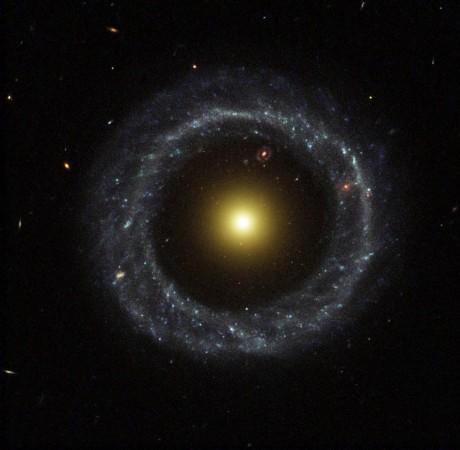A new galaxy, situated 359 million light years away from Earth has been discovered by scientists. This new, and unique, type of ring galaxy has been named PGC 1000714.
Also Read: Top Space News 2016: EmDrive updates and controversies
Scientists from the University of Minnesota Duluth (UMD) and the North Carolina Museum of Natural Sciences conducted the research.
The galaxy has a unique structure and falls is a Hoag-type galaxy, comprising an egg-shaped core, encompassed by two circular rings.
Researchers describe rare #galaxy ‘nobody has ever seen before’https://t.co/n9g4YdLaTk#PGC1000714 #Universe #Astrophysics #Astronomy pic.twitter.com/fje9m4T564
— DeepSpaceDrones (@DeepSpaceDrones) January 4, 2017
Spotting ring galaxies is rare. Patrick Treuthardt, an astrophysicist from the North Carolina Museum of natural Sciences, wgno.com, "It was like spotting a snow leopard or some other rare and elusive animal".
Treuthardt stated that a Hoag-type galaxy was one with a single circular ring surrounding a round core, which is already rare. Finding one with potentially two very regular rings is even more unique.
This galaxy was spotted by Treuthardt while he was analyzing another cluster of galaxies.
The galaxy was observed and analysed by the Las Campanas Observatory in Chile.
The inner red core of the galaxy was found to be around 5.5 billion years old and the outer ring comprising a blue star, was found to be just 0.13 billion years old.
Scientists have observed galaxies with a blue ring around a central red body before, take for example Hoag's object (seen below). But the uniqueness of this galaxy is the older diffuse red inner ring.
What is Hoag's Object?

The lead author of the study, Burcin Mutlu-Pakdil from the Minnesota Institute for Astrophysics told ctvnews.ca that "less than 0.1 per cent of all observed galaxies are Hoag-type galaxies".
Accoring to Mutlu-Pakdil, the different colours of the galaxy rings define separate periods of their formation. She also revealed that the origins of the galaxy could not be ascertained from the data currently in hand. More images of other similar galaxies will be required to understand the phenomenon.
The researchers also revealed that the blue outer ring could be an outcome of a gas-rich dwarf galaxy swallowed by PGC 1000714.












